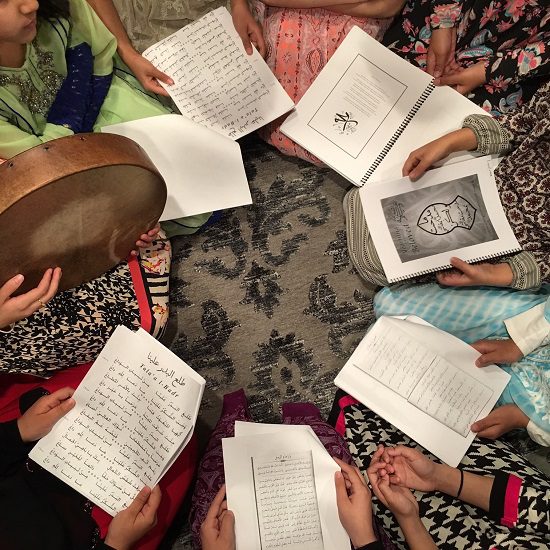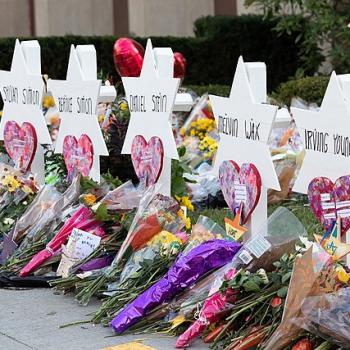 |
|
Free speech can be costly
|
There have been numerous cases [1] where various religious communities have objected to films, art exhibits, books, songs, plays, lifestyles, etc. as being blasphemous, offensive, obscene, or …. [1] Sometimes the protestors have threatened violence. [2] People have seen these issues as insensitive to their feelings, disrespectful, as an attack on their culture or values, as sacrilege, as blasphemy, or as intolerance or prejudice. [3] Sometimes there have even been protests against other religious groups, or the expression of their religion in the public square. [4]
The Background
The current Danish cartoon incident is different only in the intensity and variety of the reactions to the cartoons. The Jyllands-Posten, a Danish newspaper approached forty artists asking for depictions of Muhammad and received in response twelve cartoons of the Prophet � several playing on the perceived connection between violence committed by Muslims in the name of Islam around the world today. These 12 cartoons were published in the paper. The actual cartoons can still be viewed online, and I hope they will remain there so people can see what it is that is causing all the trouble.
Why were these cartoons published in the first place. Reading through the hundreds of articles that have been published about this incident, the intention seems to have been to spark debate on whether there is still freedom of expression in Denmark and Europe (particularly after the murder of Theo van Gogh). The paper, commissioned the drawings because they believed that non-Muslim artists were self-censoring due to fear of reprisals and death threats, and the paper wanted to make a statement about free speech. However, if they wanted to make a point about press freedom, they should have also considered the possible effects such cartoons might have in an environment of growing Islamaphobia and anti-Semitism in Europe. Why choose this time to increase tensions and focus on negative perceptions of Islam. Even if they did not mean to cause such an uproar, they must have realized that in this age of the internet and instant communication they were publishing materials that would be seen around the world in a matter of hours and whose effect was not limited to an internal Danish discussion of free speech.
The bottom line is that these 12 cartoons were commissioned “on a dare” that no paper would be willing to published material that insulted Islam, and they were published all at the same time, leading one to believe that there was at least an element of deliberate provocation involved.
In fact, if the goal was a discussion of free speech, why not commission cartoons attacking some cherished aspect of Christianity. Why not commission cartoons of Jesus? If they truly believed that “their” cherished value of free speech was being threatened by Muslim reactions to what Muslims considered blasphemy, what better way to show their own tolerance than by attacking their own religious beliefs. It is difficult to believe that they did not consider the possibility that in the current political climate these cartoons might be seen as a direct attack on the Prophet and on Islam, and that it might be an incitement to violence and an encouragement for a “clash of civilizations”.
The Response
Once the cartoons were printed, the reaction of Muslims worldwide to what they perceived as a direct attack on Islam was immediate. An apology was demanded from the paper and initially refused. Boycotts of Danish products were begun. Muslim Ambassadors to Denmark were recalled. The editor of the newspaper has received threats. Palestinian gunmen took over an EU office in protest, and threatened to blow up churches if an apology was not received in 48 hours. The EU President defended the right of “freedom of expression” in the cartoons. The Secretary General of the OIC said that they would “ask the UN general assembly to pass a resolution banning attacks on religious beliefs.” The Editor of the newspaper did apologize, but by this time the cartoons had been republished in papers all over Europe leading the Islamic Human Rights Commission to state that “the republication of caricatures of Prophet Muhammad in Europe is indicative of the hatred that precedes genocide.” The Jewish ADL issued a statement pointing out their concern with both the offensive nature of the cartoons, and concern about the extreme reaction, and what it perceived as a double standard when anti-Jewish cartoons and statements in the press in some Muslim countries go unremarked. And, of course, Robert Spencer has reprinted the cartoons with his usual Islamaphobic comments on Front Page.
Obviously, this is an emotional issue and people on both sides feel very strongly. There are many questions to consider. Does one have the right to make fun of religion? Of any religion? Any ethnic group? Any race? Where is the line between freedom of speech and censorship? Are there any limitations on freedom of speech? What are the limitations? What constitutes obscenity? What constitutes blasphemy? What is hate speech? What are appropriate responses?
Free Speech?
Whatever limitations we place on free speech require careful consideration in order to protect the rights of all. There is not unanimous agreement on the answers to these questions, and the laws vary from country to country, and even from state to state within the US
Europe has multiple anti-hate laws. For example, questioning any aspect of the holocaust is illegal in Germany, France, Spain, Switzerland, the Netherlands, Poland, and Austria. In the UK, you can go to jail for inciting racial hatred under the Public Order Act. Norway outlaws threats and insults to people based on skin color, nationality, outlook on life and sexual preference.
There has been a recent tendency in Western countries towards the repeal or reform of blasphemy laws, and these laws are only infrequently enforced where they exist. Blasphemy laws still exist in several countries, such as in Austria, Finland, Germany, Italy, Ireland, The Netherlands, Spain, and United Kingdom. In the US, the First Amendment guarantees a relatively unlimited right of free speech, although some US states still have blasphemy laws on the books. Chapter 272 of the Massachusetts General Laws states, for example: Section 36:
“Whoever wilfully blasphemes the holy name of God by denying, cursing or contumeliously reproaching God, his creation, government or final judging of the world, or by cursing or contumeliously reproaching Jesus Christ or the Holy Ghost, or by cursing or contumeliously reproaching or exposing to contempt and ridicule, the holy word of God contained in the holy scriptures shall be punished by imprisonment in jail for not more than one year or by a fine of not more than three hundred dollars, and may also be bound to good behavior.”
Britain has a religious hatred law. Australia has a law against “racial vilification” as do Canada, the UK, New Zealand, Belgium, Austria, Denmark, Norway, Sweden, the Netherlands, and Italy. The law generally allows that there are limitations on free speech, e.g. defamation of another, inciting to riot, endangering the public safety (the famous “shouting ‘fire’ in a crowded theater” example). Free speech can’t be limited just because it offends someone. Almost any speech will be offensive to someone. If we limit a particular form of free speech because it offends “us”, what happens when “we” offend “them.”
In the opening phrase of the Declaration of Independence, the founders of this country proclaimed it as self-evident that human beings have permanent and inviolate rights. The First Amendment to the Constitution stipulates that among those liberties is the right of free speech.
According to the ACLU, “the First Amendment exists precisely to protect the most offensive and controversial speech from government suppression. The best way to counter obnoxious speech is with more speech. Persuasion, not coercion, is the solution.”
Even in the US there have been limits to free speech. In Seattle a TV show called “Mike Hunt TV” was taken off the air because a content review board determined that free speech was being abused and the program was simply obscene. Everyone has heard about the battles over Howard Stern, and the recent TV program “Daniel” which was pulled after only couple of episodes. Therefore there are limits, and it is possible to influence change without resorting to violence and injustice.
Inappropriate Responses and Double Standards
When honor killings, suicide bombings, attacks on Christian churches, destruction of Buddhist statues, insults towards other religions are carried out anywhere in the world by individuals claiming an Islamic justification for such acts – then as Muslims, we need to speak out just as strongly for justice.
When anyone, anywhere (whether Muslim or not) is treated unjustly because of their religion, race, sex, or ethnicity by anyone (whether Muslim or not) Muslims should be the first to speak out for justice. If any prophet is maligned, or any place of worship is profaned, if any scripture is treated disrespectfully, then Muslims should be the first to speak out in their defence.
How is it possible that we can even consider exceeding the bounds of justice in response to such incidents as the Qur’an incident a few years ago, and this current incident of a few dumb cartoons in a relatively small newspaper in a country of only 5 million people. The excessive response is causing more harm to Islam and Muslim than the cartoons ever would have (and, in fact they would probably have gone unnoticed by the rest of the world if such attention had not been called to them).
“If Muslims recklessly take the lives of innocent people in a riot protesting the desecration of the Qur’an, isn’t that also desecrating the Qur’an? And what about the other instances of desecration of the Qur’an? Human Rights Watch documented in a report issued last year that the (Muslim) janjaweed militia desecrated Qur’ans belonging to the (Muslim) African inhabitants of Darfur. Yet, I don’t care as much about that as the fact that the janjaweed have raped, pillaged, and massacred their own fellow Muslims in Darfur. Isn’t this also a desecration of the Qur’an? Why hasn’t the Muslim World responded forcefully to stop the genocide of Darfur?” – Dr. Hesham A. Hassaballa
The cartoons are a repeat of old anti-Semitic drawings, complete with hooked noses and swarthy complexions. The cartoons ARE offensive – but the response by many Muslims is more than offensive. Death threats, armed men taking over offices, threats against places of worship, etc. ARE offensive, illegal, immoral, unjust, and against the very spirit of Islam. Threatening to blow up churches in Palestine because a newspaper in Denmark (which is a predominantly Christian country) ran offensive cartoons means that these clowns are saying that every Christian in the world is responsible for the actions of anyone in the Christian world. This is madness just as much as those who hold the same attitude towards Muslims and Islam.
This sort of criminal, insane behavior plays right into the hands of the Islamaphobes and those who want to bring about a clash of civilizations. Even a just cause does not give anyone the right to use illegitimate means or deny others their rights.
There have been individual Muslims who have committed injustices against people of other faiths. There have been newspapers in Muslim countries that have carried offensive cartoons about Jews. There have been Muslims who have carried out violent acts against people of other faiths. As Muslims we need to be even more strong and outspoken in our objections to this perversion of Islam. We need to do everything we can do to reign in our own extremists.
If, as Muslims, we want to show respect for the Prophet, for the Qur’an, and for Islam, then we need to set a noble example of justice, tolerance, and respect. If we want respect from others we need to show them equal respect.
“Here are a few facts we should remember. However offensive any of the 12 cartoons were, they did not incite violence against Muslims. For an example of incitement, though, one must go back a few weeks before the cartoons were published. In August, the Danish authorities withdrew for three months the broadcasting license of a Copenhagen radio station after it called for the extermination of Muslims. Those were real threats and the government protected Muslims – the same government later condemned for not punishing the newspaper that published the cartoons. …
As just one example, last August Fadi Abdullatif, the spokesman for the Danish branch of the militant Hizb-ut-Tahrir organization, was charged with calling for the killing of members of the Danish government. He distributed leaflets calling on Muslims in Denmark to go to Fallujah in Iraq and fight the Americans, and to kill their own leaders if they obstructed them. Police in Denmark have been on alert since the London bombings, after which at least three extremist Web sites warned that Denmark could be the next target. There are 500 Danish troops working alongside American and British troops in Iraq.
Not only does Hizb-ut-Tahrir, an organization banned in many Muslim countries, have a branch in Denmark, but Abdullatif has a history of calling for violence that he then justifies by referring to freedom of speech – the very notion the Danish newspaper made use of to publish the cartoons. In October 2002, Abdullatif was found guilty of distributing racist propaganda after Hizb-ut-Tahrir handed out leaflets that made threats against Jews by citing verses from the Koran. He was given a 60-day suspended sentence.
Abdullatif used the Koran to justify incitement to violence! And we still wonder why people associate Islam with violence?
Muslims must honestly examine why there is such a huge gap between the way we imagine Islam and our prophet, and the way both are seen by others. Our offended sensibilities must not be limited to the Danish newspaper or the cartoonist, but to those like Fadi Abdullatif whose actions should be regarded as just as offensive to Islam and to our reverence for the prophet. Otherwise, we are all responsible for those Danish cartoons.” – (Mona Eltahawy)
A Reasonable Response
Take issues to court under the laws of the country in which you live – cancel your subscription – organize boycotts to exert economic pressure – send your message out peacefully – explain your position – lobby to enforce or change existing laws – take concerted action within the law – use legitimate, peaceful means – remain calm so that you can act and not simply react – get your own house in order – demand the same rights and privileges for ALL – engage in respectful dialogue.
“Muslims of the world, be reasonable,” said the editor-in-chief of the weekly independent newspaper Al-Shihan in Jordan in an editorial alongside some of the cartoons, including the one showing the Muslim religion’s founder wearing a bomb-shaped turban. “What brings more prejudice against Islam, these caricatures or pictures of a hostage-taker slashing the throat of his victim in front of the cameras or a suicide bomber who blows himself up during a wedding ceremony in Amman?” wrote Jihad Momani.
NOTES:
[1] Partial list of incidents sparking protest:
“The Life of Brian” a Monty Python film was objected to by both Jews and Christians, and was banned in many communities in Britain.
Pepsi was forced by a boycott and protests to discontinue an ad featuring a video of Madonna singing “Like a Prayer”.
Members of the Harvest Assembly of God Church in Penn Township burned books, videos and CDs that they judged “offensive to their God.”
Christian groups across the US protested a film about the life of sex researcher Alfred C. Kinsey, and sought “legislation and will punish sponsors of lewd entertainment.”
Christians in Pakistan protested
what they considered “blasphemous” remarks made about Jesus in a newspaper review of the book the “Da Vinci Code”. They demanded that the newspaper be closed, for which they threatened protests outside the Lahore Press Club and other important places.
Christians filed lawsuits, promoted boycotts and launched campaigns aimed at restoring references to Christ in seasonal celebrations.
Hindus demanded withdrawal of a British “Christmas” postage stamp they found insulting to their religion.
45,000 complaints came in, and there were demonstrations in London when the BBC aired a program “Jerry Springer: the Opera” considered “blasphemous” by many Christians. Christian lawyers were contacted, to consider whether it was possible to prosecute the BBC under the Common Blasphemy Law, last used in 1977.
Parents at a Colorado school objected to a library book and got permission to hold a book burning.
Christians protested the change from B.C. to B.C.E., as they saw it as an attack on Christianity.
Christian groups protested a music video by Jessica Simpson that they considered indecent.
Catholic Nuns protested outside of the set for the “Da Vinci Code” film.
Christian groups protested “civil unions” for gays.
Nearly a thousand Catholics gathered and prayed in front of Santa Fe’s Museum of International Folk Art to express their outrage at an exhibit they considered blasphemous.
Catholics protested “blasphemy” in a California art display.
Currently, Hindu Americans are protesting against the portrayal of Hinduism in school textbooks in California. The textbooks “call Hanuman, a god worshipped for his loyalty and protection, the “monkey king.” One exercise tells students that Hanuman loved Rama (a Hindu god) so much that some believe he appears every time the Ramayana (ancient Sanskrit epic) is read. “So look around � see any monkeys?” the passage taunts.”
Right now there is a company in Sweden producing jeans with an anti-Christian jeans logo. The jeans designer openly admitted that he meant this to be anti-Christian. “It is an active statement against Christianity,” Bjorn Atldax told The Associated Press. “I’m not a Satanist myself, but I have a great dislike for organized religion.”
In December of 2004 there was an art exhibit by Leon Ferrari, in Buenos Aires in which works of “art” were displayed which depicted scenes such as saints burning themselves in a toaster, the Blessed Mother in a frying pan, and a statue of the Last Supper in which Christ and the Apostles face a pack of rats.
In 1999 the Brooklyn Museum presented an exhibit called “Sensation,” which featured a painting by one Chris Ofili titled “The Holy Virgin Mary.” The painting showed a woman with elephant dung forming one breast and pornographic cutouts surrounding her.
In November 2002, Egypt, despite being bound by a 1979 treaty preventing “incitement” against Israel, allowed their state-owned television network to produce “A Horseman Without a Horse” (Fares Bela Gewad), a 41 part “historical drama” largely based on the Protocols of the Elders of Zion, which ran on Egyptian television as well as numerous Arabic satellite television channels for a month. The protocols are old anti-Jewish propaganda, promoted in the West primarily by neo-Nazis and other racists.
In March of 2000 Al-Hayat al-Jadida, the official Palestinian Authority journal, published a cartoon which showed the Pope talking to a Jewish man with the skin, feet, and tail of an animal, and a big hooked nose, wearing a kippa.
A cartoon that appeared in an American newspaper using the Star of David (a symbol of Judaism, not of Zionism) in a political cartoon.
Anti-Christian riots erupted in Egypt in October, 2005 following rumors that Saint George’s Coptic church in Alexandria had distributed a DVD containing material that was offensive to Muslims.
[2] Two senior BBC executives, directly involved in the broadcast of “Jerry Springer: the Opera” were provided special security by the corporation following “threatening” calls after their telephone numbers were posted on the website of a Christian group, leading the protest. Security was also tightened at a Central London theater showing the opera.
[3] Some of the comments about an art exhibit considered blasphemous:
a) Mexican Cardinal Carrera wrote: “We cannot keep silent nor be indifferent before such a monstrous attack on the religious convictions and sentiments of our Mexican people who are mostly Catholic. It seems to us to be deeply lamented that in the name of culture and freedom in your country, our culture should be attacked at its very root.”
b) Archbishop Michael Sheehan of the Santa Fe archdiocese commented in a recent article addressing the blasphemy: “As Archbishop of Santa Fe, I certainly find it offensive that the Catholic symbol of Guadalupe has been so disrespectfully treated.”
c) Fr. John Trigilio of the Confraternity of Catholic Clergy wrote that “to be silent or to do nothing when God and all things holy are being attacked is to be in darkness.”
d) Mother Angelica also sent words of encouragement reminding people that “It [the protest] is about giving Our Lady the comfort of knowing that she is the Mother of children who truly love her!”
e) Congressman John Hostettler wrote that he “is appalled and saddened that this is even an issue in today’s culture.”
f) Paul Weyrich of Washington’s Free Congress Foundation wrote: “You have my full support in your effort to counter this horrible sacrilege.”
[4] In March 2004 over a thousand Orthodox Christians gathered in central Moscow’s Pushkin Square to protest the building of a Hare Krishna temple on the northwestern outskirts of the city. The group said that they were protesting because the Hare Krishna faith was not “traditionally Russian”. The organizers also gathered 20,000 signatures on a petition not to allow the building of the temple.
Sheila Musaji is editor-in-chief of The American Muslim.











